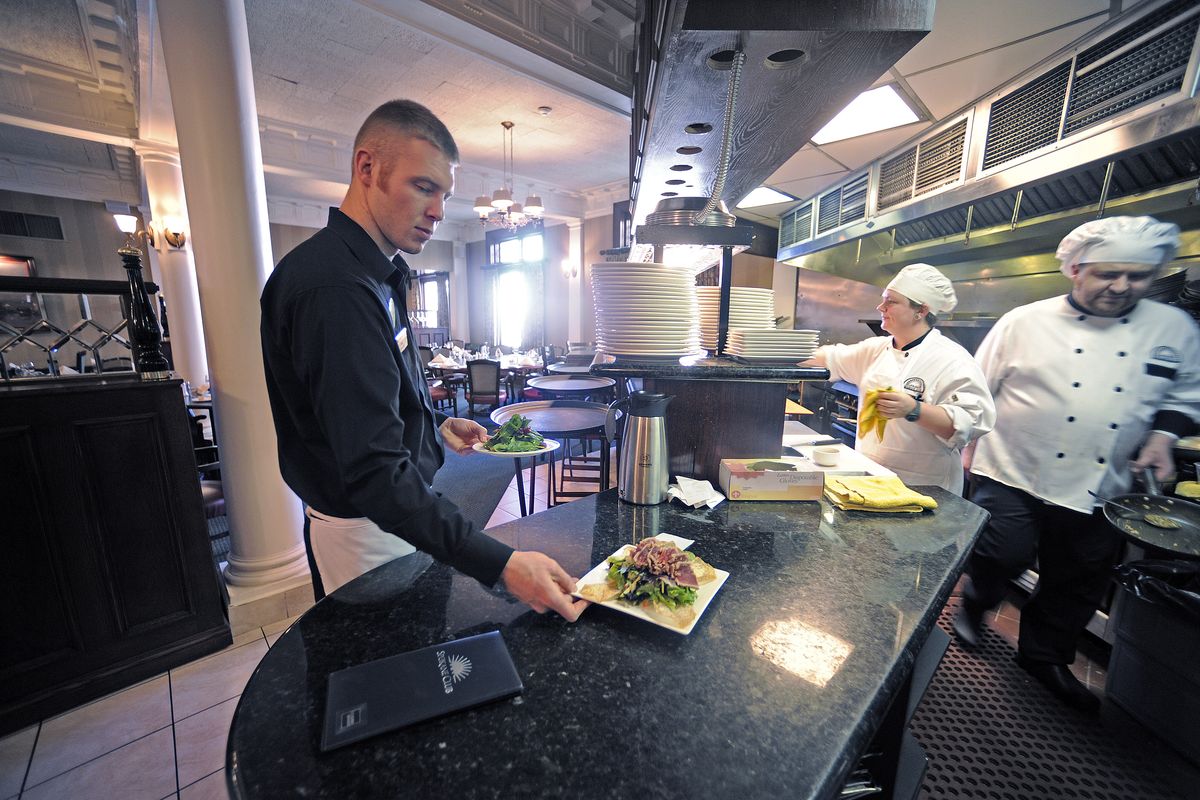Century-old Spokane Club has changed its rules with the times

If reverence for tradition had been allowed to choke the impetus for change, the distinctive Kirtland Cutter-designed building at Riverside Avenue and Monroe Street might well be one of downtown’s “Long ago, that used to be …” landmarks.
But the Spokane Club is still the Spokane Club. And that’s because, time and again, the venerable private enclave’s leaders have cracked open the elegant front door and glimpsed the future.
In the 1960s, an athletics and fitness facility was added. In the 1970s, women were accorded full-status membership. Racial barriers came down. Dress codes were relaxed.
Those in charge of the well-upholstered sanctum that some inhabitants regarded as a bulwark against the unwashed outside world have acknowledged, if not unreservedly embraced, social trends.
A 1990 story in The Spokesman-Review noting the centennial of the upscale haven’s founding at a different site began this way: “The Spokane Club just isn’t what it used to be. A lot of people are glad.”
Still, 20 years later, the formula for survival remains a balancing act.
Board of trustees President Jan Quintrall, who is head of the local Better Business Bureau, summed up the challenge in a recent issue of the club’s magazine:
“Are we trying to include everyone and welcome everyone? Nope. We are a special place and we are selective in the members we embrace, but we are not snobs, nor are we elitist.”
In a city where class-conscious resentment of even the appearance of affluence can rankle, it hasn’t always been an easy sell.
Membership had declined in recent years. For a time, the club took to referring to itself as the Spokane Athletic Club.
But insiders say there’s a new, brutally honest focus on customer service. And since late last summer, the trend arrow is pointing up. Membership is climbing again.
“I’m optimistic,” said John Pilcher, the club’s CEO.
He said more people are coming to realize that the club isn’t “stodgy,” but is, in fact, family-focused and responsive to the needs and desires of young professionals and other members.
After-school programs for kids, a revitalized dining experience and the prospect of a dues discount for snowbirds are just part of the picture in 2011.
“There has been a sea change here at the Spokane Club,” said board President-elect Kevin Twohig, who is executive director of Spokane’s Public Facilities District.
No longer are the club’s leaders obsessed with meeting the expectations of bygone generations, he said.
Today the club even advertises.
According to Pilcher, the Spokane Club has about 3,000 members. That figure swells to about 7,000 when family members are included.
He said about one-third are almost exclusively interested in the nonprofit enterprise’s social/dining offerings, one-third are primarily focused on the athletic facilities (either downtown or at the club’s Spokane Valley complex) and the remaining third regularly take advantage of both.
To join, an individual must be sponsored by two members.
Because of a desire to make signing up more affordable for younger people, there are several membership classifications for different ages. One family plan for those over 30 calls for an initiation fee of $495 and a monthly bill of $151.73.
It’s rare that an applicant is turned down, said Jon Fine, the club’s director of sales and marketing. In those instances, it is almost always because red flags popped up during the credit check, he said.
The possibility of a fitness-center-only membership has been discussed for decades, said Ted Olson, an environmental engineer who was club president 20 years ago. That gets shot down in part because of fears that it would create a schism in the membership that could erode the club’s congenial ambiance, he said.
Besides, according to some, that would ignore the time-honored organization’s reason for being.
“If you define the purpose of a place like the Spokane Club, it’s to be a vital gathering point in the community,” said club CEO Pilcher.
Attempting to maintain that status has required some seismic shifts and subtle tweaks over the years.
Not everyone applauds every step in a new direction, of course – especially certain members who are accustomed to getting their way.
“We have to recognize that we’re not going to please everybody,” said Pilcher.
Going back to when she was a little girl, club member Susan Shane Miller has watched the changes for some 50 years. She knows there are more to come.
“I think the club has rolled with the punches of changing times fairly well,” she said.
And now, just as its signature downtown building is about to turn 100 years old, the Spokane Club is ready to come out swinging.